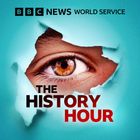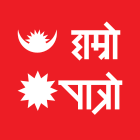
The History Hour
Oct 22, 2022
A collection of the latest Witness History programmes which are all about Cuba. Presented by Max Pearson, who speaks to boxing journalist Steve Bunce about the nation's great boxers.
Earlier this year, Cuba lifted the ban on professional boxing, which Fidel Castro imposed in 1962. Rachel Naylor speaks to Mike ‘The Rebel’ Perez, who escaped in 2007 after being rewarded with a fizzy drink and two snapper fish after winning a world amateur title for his country. His defection needed the assistance of Mexican gangsters, an Irish promoter with an eye for a winning fighter and a fishing boat.
We also hear about a campaign aimed at eradicating illiteracy, a baseball match between Cuba and the US that was an act of diplomacy and the Cuban Missile Crisis which saw the world brought to the brink of nuclear war.
(Photo: Cuban boxer Teofilo Stevenson at the 1980 Olympics. Credit: Jerry Cooke via Getty Images)

